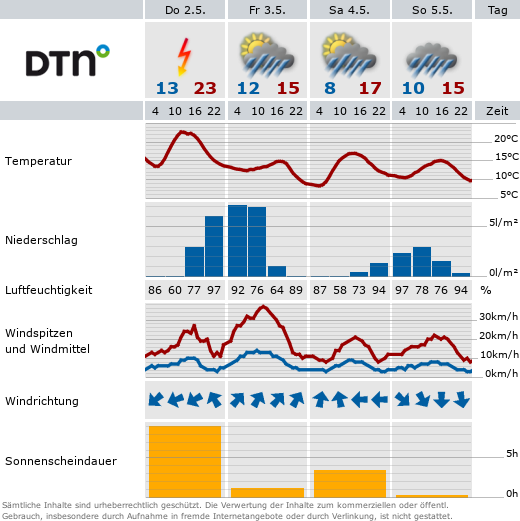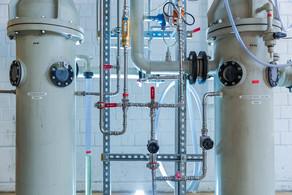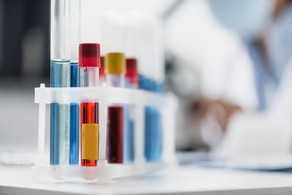PD Dr.-Ing. Christoph Brandenbusch
A Fascinating Intersection of Thermodynamics
Projects
Combining active pharmaceutical ingredients (API) and Polymers in amorphous solid dispersions (ASD) enhances aqueous solubility and release of new APIs. However, ASDs with higher drug load may release the API and Polymer incongruently related to amorphous-amorphous phase separation during dissolution. Ternary ASDs containing surfactants increase the drug load at which congruent release is achieved, the so-called ‘Limit of congruency’ (LoC).
Thermodynamic models are an essential part of today’s process development and optimization. Applications span across all fields and disciplines in the chemical, biotech and pharmaceutical industry. With the exception of ab-initio and purely predictive approaches, thermodynamic models in general require pure component and/or binary interaction parameters, fitted to experimental data.
Projects
The application of monoclonal antibodies and proteins is an emerging field in biotechnology due to their high specificity with antigens [1]. However, most of the proteins have a poor solubility in water and therefore their application is mostly limited to intravenous administration. In the course of this work, suitable additives shall be identified that increase the protein concentration up to 150 to 200 mg mL-1 to enable subcutaneous administration of these formulations with higher patient compliance.
Aqueous Two-Phase Extraction (ATPE) using Aqueous Two-Phase Systems (ATPS) has long been shown to be a viable and promising alternative in the work-up of potent biomolecules (e.g. enzymes, proteins, therapeutics) from fermentation broth. Although ATPE has significant advantages over common separation strategies, such as a high biocompatibility, gentle separation profile due to low interfacial tension, good scalability and high efficiencies, industrial application have not yet been realized. [1, 2]
The development of protein formulations for administration of monoclonal antibodies (mAbs) is an important and growing field in pharmaceutical biotechnology [1]. The low solubilities achieved in state of the art formulations commonly only allows their administration via intravenous injection [1]. An increase in protein concentration, which enables the subcutaneous administration, requires the addition of suitable excipients / excipient mixtures to stabilize the protein in solution and increase solubility. A method for their identification, furthermore delivering a mechanistic understanding, will be identified within this work.
The potential of whole-cell biocatalysis as an efficient and green alternative to common chemical synthesis routes rises increasingly. Using a biphasic reaction system provides high stereo selectivity as well as high product titers due to the presence of an organic phase serving as substrate reservoir and product sink. The challenge for an industrial implementation of biphasic whole-cell biocatalysis is the formation of stable emulsions that cannot be separated by common unit operations. In contrast using the phenomenon of catastrophic phase inversion (CPI) phase separation is easily achieved by a sudden switch of emulsion type caused by addition of dispersed phase.
The development of innovative downstream processing concepts for biocatalytic products serving as building blocks in the chemical and biochemical industry has become increasingly important in the last years, especially due to the increasing prices of fossil resources as well as high costs associated to state-of-the-art workup strategies [1]. In the frame of this work, reactive extraction (RE) of bio-based dicarboxylic acids and diamines is investigated in order to enable selective and cost-efficient downstream processing of these products.
When it comes to long-term stability of biopharmaceuticals, liquid dosage/storage forms occasionally reach their limits. Freeze-drying / Lyophilization is used to reduce the water content in the formulation. Within this project, we perform a thermodynamic characterization of the freeze-drying process and the investigate influence of additives on the stability and solubilization of the biopharmaceutical.
The target of this research is the optimization of the production and storage of Lipid Nanoparticle formulations through the implementation of appropriate parameters and conditions (e.g., flow rates, temperature, and pH) and the addition of stabilizing excipients.
Process simulation plays a key role in improving or developing efficient and sustainable processes. Thermodynamic models (e.g. PC-SAFT, UNIQUAC) included in process simulators offer a detailed description of complex mixture properties. Within this project, we develop a predictive ML-approach to obtain required model parameters from data-driven methods of machine learning (ML).
Aqueous micellar solvent systems are a promising and green alternative to organic solvents in homogeneously catalyzed reactions. Despite the potential of micellar solvent systems as a simple and economic reaction medium, their industrial application is rather sparse. This project focusses on investigating the mechanism of micelle formation as well as the solubilization capacity of micelles towards weakly polar compounds.






